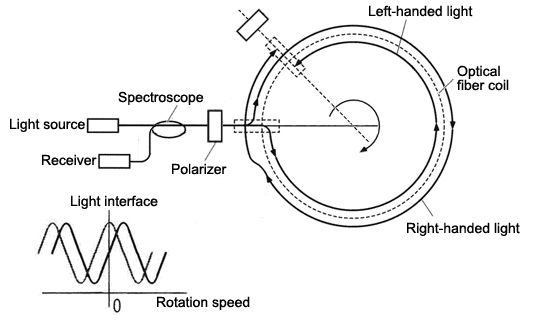You are at... HOME > Applications > Fiber Optic Gyroscope development > FOG basic principle
Fiber Optic Gyroscope development
FOG principle
Gyroscope is used for measuring orientation, based on the principle of conservation of angular momentum. Classical gyroscopes contain movable parts, require long time to stabilize the rotation, are fragile, and costly.
Unlike classical one, Fiber Optic Gyroscope (FOG), has virtually no moving parts and no inertial resistance to movement. It consists of a coil of as much as 5 km of optical fiber and uses the interference of light to detect mechanical rotation (exploiting Sagnac effect). FOG provides extremely precise rotational rate information, due to its lack of cross-axis sensitivity to vibration, acceleration, and shock. Furthermore, its performance can be stabilized right after start up (does not require starting calibration), has relatively small energy consumption
The size of FOG device can be reduced due to the fact that optical fiber, even longer than 1 km, can be wrapped around a coil 10 cm in diameter.
